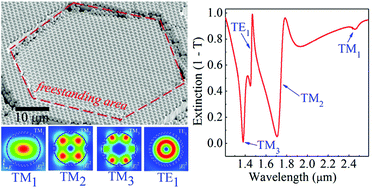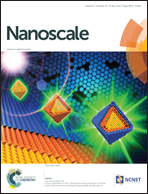Excitation and tuning of Fano-like cavity plasmon resonances in dielectric–metal core–shell resonators†
Abstract
Fano resonances have been realized in plasmonic systems and have found intriguing applications, in which, however, precisely controlled symmetry breaking or particular arrangement of multiple constituents is usually involved. Although simple core–shell type architectures composed of a spherical dielectric core and a concentric metallic shell layer have been proposed as good candidates that support inherent Fano resonances, these theoretical predictions have rarely seen any detailed experimental investigation. Here, we report on the experimental investigation of the magnetic and electric-based multipolar plasmonic Fano resonances in the dielectric–metal core–shell resonators that are formed by wrapping a nearly perfect metal shell layer around a dielectric sphere. We demonstrate that these Fano resonances originate from the interference between the Mie cavity and sphere plasmon resonances. Moreover, we present that the variation on either the dielectric core size or core refractive index allows for easily tuning the observed Fano resonances over a wide spectral range. Our findings are supported by excellent agreement with analytical calculations, and offer unprecedented opportunities for realizing ultrasensitive bio-sensors, lasing and nonlinear optical devices.


 Please wait while we load your content...
Please wait while we load your content...